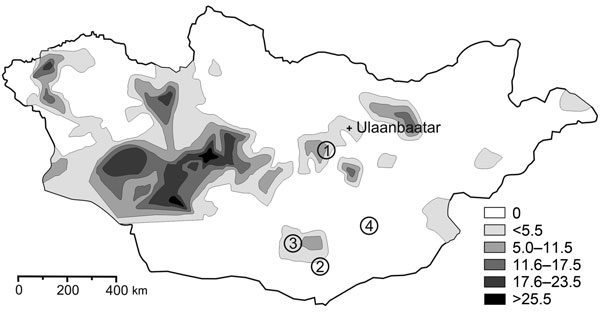Volume 17, Number 7—July 2011
Letter
Yersinia pestis in Small Rodents, Mongolia
Figure

Figure. Yersina pestis in rodents in Mongolia. Shaded areas show the known distribution of enzootic plague in Mongolia during 1948–1999 (V. Batsaikhan, J. Myagmar, G. Bolormaa, National Center for Infectious Diseases with Natural Foci, Ulanbaatar, Mongolia; pers. comm.). The following 133 rodents were investigated: gerbils (Meriones unguiculatus, 61; M. meridianus, 25; Rhombomys opimus, 17); jerboas (Allactaga sibirica, 6; Stylodipus telum, 1; Dipus sagitta, 4; Cardiocranius paradoxus, 1), and squirrels (Spermophilus alaschanicus, 1; Citellus dauricus, 1). Plague-positive trapping loci were the following: 1, Tuv Aimag, Bayanunjuul Sum; 2–4, Umnugovi Aimag (2, Nomgon Sum; 3, Bayandalai Sum; 4, Manlai Sum). Y. pestis DNA was found in 7 rodents (gerbils and jerboas).